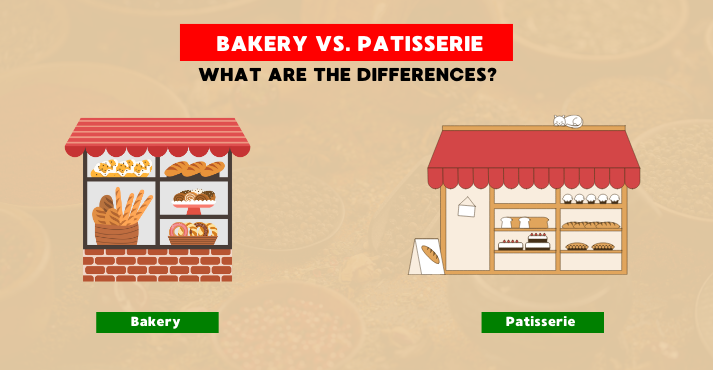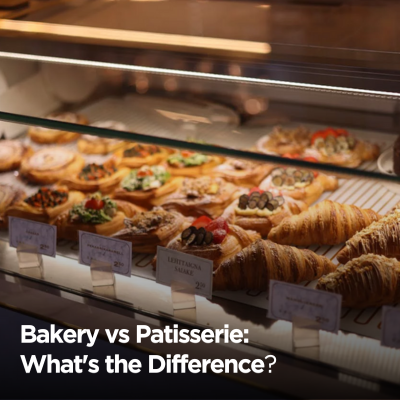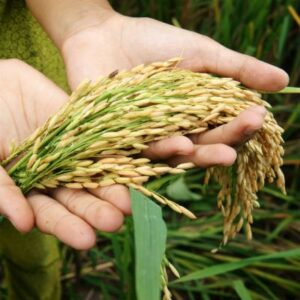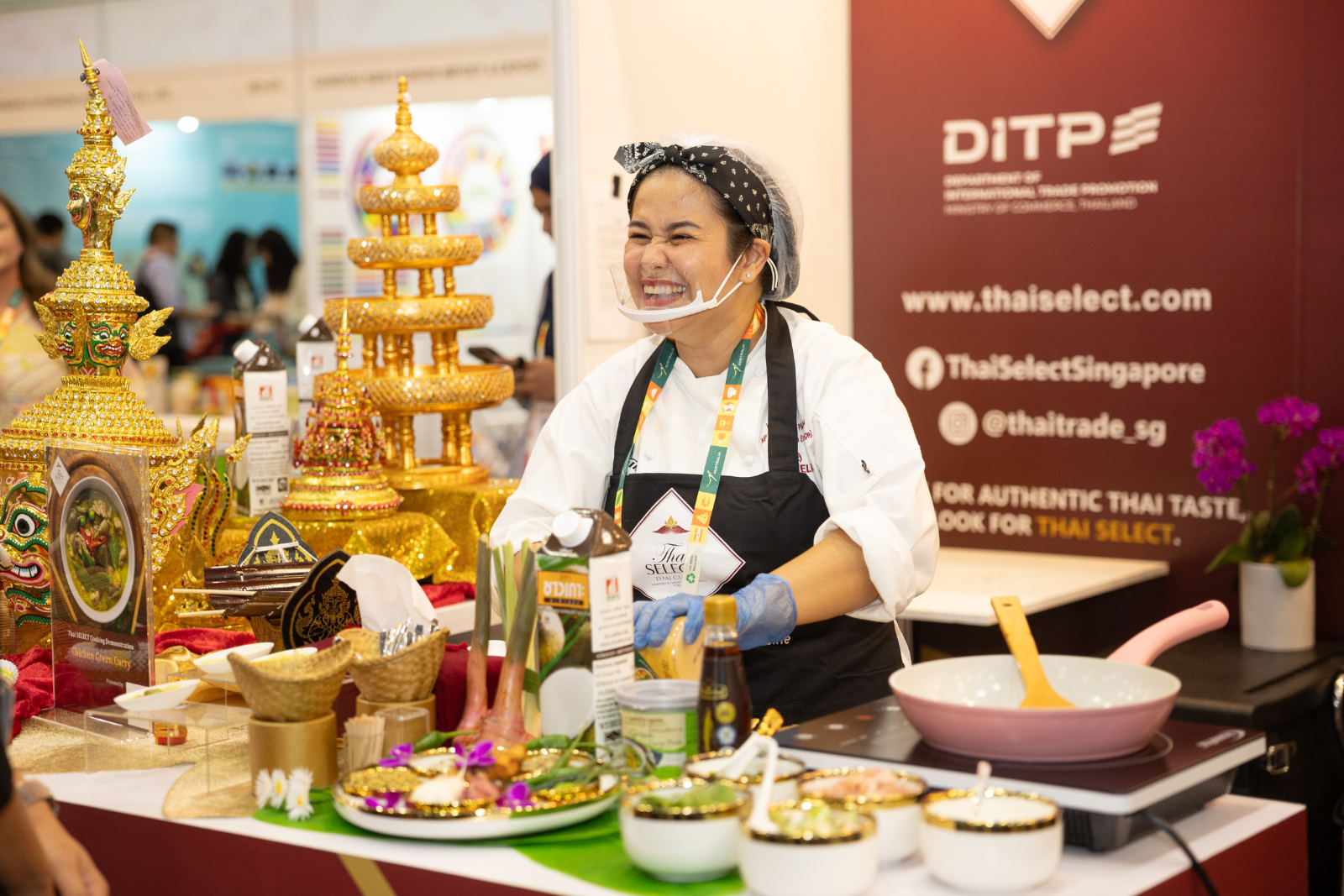Bakery and patisserie items are popular among people of all ages, whether on special occasions or everyday cravings. The global bakery products market is expected to reach $731 billion by 2032. However, a bakery and a patisserie are not the same entities.
Understanding the difference between patisseries and bakeries is essential for consumers and food industry professionals. While both specialize in baked goods, their focus, techniques, and product offerings differ significantly.
You must distinguish between patisserie vs. bakery to get what you seek for quality baked products, whether for daily consumption or special occasions. Even if you belong to the food industry and are running a bakery or a patisserie, you should be able to identify their unique roles to help you better segment and market your products.
Let’s discover the differences and see what it means when we look for patisserie vs. bakery.
Key Differences Between Patisserie and Bakery

Bakeries and patisseries may seem similar initially, but they have some differences.
To address everyday essentials, a bakery primarily focuses on diverse bread-based products, including loaves, rolls, bagels, and sandwiches.
In contrast, a patisserie offers high-end and refined French pastries, such as fruit tartlets, Mille-feuille, and Choux pastries, focusing more on taste precision, artistry, and best-in-class craftsmanship.
While both bakery and patisserie offer baked goods, a patisserie is distinguished by the finesse required to create visually stunning and flavourful desserts.
Let’s discover the key differences between patisserie vs. bakery in detail.
[fusion_table fusion_table_type=”1″ fusion_table_rows=”” fusion_table_columns=”” margin_top=”” margin_right=”” margin_bottom=”” margin_left=”” hide_on_mobile=”small-visibility,medium-visibility,large-visibility” class=”” id=”” animation_type=”” animation_direction=”left” animation_speed=”0.3″ animation_offset=””]
| Category | Bakery | Patisserie |
|---|---|---|
| Focus | Bread, rolls, bagels, pies, and simple cakes. | Delicate pastries, mousse cakes, macarons, éclairs, tarts, and artistic desserts. |
| Technique | Straightforward, focusing on traditional mixing, kneading, and baking. | Precise techniques like laminating, tempering, and decoration with attention to detail (like art). |
| Emphasis | Functionality, consistency, and everyday usability. | Flavor balance, delicate textures, and detailed presentation. |
| Maker | Baker | Patissier/Pastry Chef |
| Accessibility | Common in local neighborhoods, offering affordable and widely available products. | Often, exclusive, specialized training and premium ingredients are required. |
| Preparation Methods | Uses direct heat (ovens) and indirect heat (steam-based methods). | It involves shaping, molding, layering, and hand-decorating with precision. |
[/fusion_table]
1. Product Focus
The primary difference between patisserie vs. bakery starts from the products they focus on creating and selling to the customers.
Patisserie Specialties
All the popular patisseries in the world have an edge regarding their refined and vibrant desserts that go beyond simple baking. Their offerings typically include pastries, tarts, éclairs, mousse cakes, and other confections that require advanced techniques to achieve the perfect texture and flavor.
Many of these desserts are multi-layered, featuring delicate pastry bases, rich creams, and carefully tempered chocolate or sugar decorations. The emphasis is on creating sophisticated, visually appealing treats that are delicious and artistic.
Bakery Specialties
Conversely, Bakeries focus on a broader range of baked goods that cater to daily consumption. Bread, rolls, muffins, and simple pastries like croissants and danishes are typical in bakeries.
Unlike patisserie items, which often require complex preparation, bakery products are generally made using traditional methods passed down through generations and often showcased at events like our Bakery Trade Show.
They are designed for convenience, offering staple food items that complement meals or serve as quick snacks.
2. Craftsmanship and Techniques
The way pastry chefs or bakers create products in their respective patisseries and bakeries sets the origin from where all the distinction arises.
Patisserie Techniques
This is where the real magic happens, which sets apart the patisserie vs. bakery. The art of patisserie demands a high level of precision and skill.
Pastry chefs, known as pâtissiers, use specialized techniques such as tempering chocolate, creating layered desserts with perfect consistency, and developing next-level sugar decorations.
Achieving the right balance of flavors and textures is a key aspect of patisserie, and each dessert often involves multiple stages of preparation, from delicate dough handling to carefully controlled baking and cooling processes. Even the slightest miscalculation in ingredient proportions or temperature can affect the outcome.
Bakery Techniques
Bakeries rely on more straightforward baking techniques that revolve around traditional dough preparation methods, proofing, and baking.
Bakers must understand how to mix ingredients properly, knead dough to develop gluten structure, and proof it at the right temperature and humidity for optimal rise.
Baking bread and other bakery items requires consistency, but the techniques are generally less complex than patisserie. While artisanal bakeries may incorporate unique methods to enhance flavor and texture, the focus remains on producing fresh, wholesome products in large quantities.
3. Presentation and Aesthetics
Another key difference between patisseries and bakeries comes from the distinctive visual appeal of their products.
Artistic Presentation in Patisseries
Patisserie desserts are as much about appearance as they are about taste. Each item is carefully crafted to be visually stunning, often featuring delicate layers, glossy glazes, and graceful garnishes. High-end patisseries take great care in designing unique desserts that look as luxurious as they taste.
The presentation of these desserts is an art form, with precise attention to detail ensuring that each creation is a masterpiece.
Functional Presentation in Bakeries
In contrast, bakery items prioritize function and practicality over elaborate aesthetics. Bread, rolls, and pastries are designed for everyday consumption and are often displayed straightforwardly.
While some bakery items, such as cakes and decorated pastries, may appear appealing, the focus is on making them easy to serve and eat rather than creating elaborate designs. The simplicity of presentation aligns with the bakery’s role as a provider of staple food items rather than luxury confections.
4. Pricing and Accessibility
Pricing is the primary factor for patisseries and bakeries that sets the key line of difference in attracting different customer bases.
Patisserie Pricing
Patisserie products tend to be more expensive due to the level of craftsmanship involved and the quality of the ingredients. Exotic fruits, premium chocolates, and specialty flours are common in patisserie recipes, contributing to the overall cost.
The time-consuming nature of patisserie work and the skill required to create unique and innovative designs also play a role in the higher pricing. These desserts are often considered luxury items, making them ideal for special occasions rather than everyday consumption.
Bakery Pricing
Bakery items are generally more affordable and accessible to a broader audience who are casually out for stop-by cravings. Bakeries maintain reasonable pricing to cater to regular customers as they focus on staple products that people consume daily.
The ingredients used in bakery products, such as flour, sugar, butter, and yeast, are more common and cost-effective compared to the specialized components found in patisserie. As a result, bakeries remain a go-to option for those looking for fresh, delicious baked goods at an affordable price.
5. Occasions for Purchase
Now comes the occasion where patisserie vs. bakery products are being served, fueled by their pricing factor.
When to Choose a Patisserie
Patisserie items are often associated with special occasions and indulgent moments. Whether it’s a celebration, a high-tea event, or a formal gathering, patisserie desserts add an element of sophistication and grace.
They are ideal for birthdays, weddings, and corporate events where visually stunning and high-quality desserts are expected, making it essential to choose patisserie vs. bakery for expensive and memorable treats with your loved ones. Many also visit patisseries for an occasional treat to enjoy premium pastries that provide a unique flavor experience.
When to Choose a Bakery
Bakeries cater to everyday needs, making them preferred for breakfast, snacks, and meal accompaniments. Freshly baked bread, croissants, and muffins are ideal for daily consumption, offering a convenient option for wholesome and filling baked goods.
Whether someone needs a quick bite in the morning or a loaf of bread for the family dinner, bakeries provide accessible and satisfying choices.
6. Skill Level Required
As we have seen, there is a pricing difference in patisseries and bakeries in the previous headings; this is the main factor influencing the pricing.
Patisserie Expertise
The skills required to become a pâtissier go beyond basic baking knowledge. Pastry chefs must deeply understand ingredient behavior, flavor combinations, and precise techniques.
They have a firm grip on menu psychology compared to bakers. Mastering patisserie takes years of practice, as the craft involves delicate execution and attention to detail.
With their specialized hospitality training, from achieving the perfect puff pastry layers to sculpting a combination of chocolate decorations, pâtissier must continuously refine their expertise to serve flawless desserts in the best way possible.
Bakery Skills
While baking also requires a solid technical foundation, the skill set differs from that of patisserie. Bakers must understand dough hydration, fermentation, and oven temperatures to ensure consistent results. Efficiency is key in a bakery, as large quantities of bread and pastries must be produced daily.
The bakers experiment with unique techniques, often involving heat and oven treatments. Their fundamental skills revolve around consistency, timing, and the ability to work with different types of dough to achieve the desired texture and flavor.
Similarities Between Patisseries and Bakeries
Although there is a notable difference between patisseries and bakeries, they also share some similarities. Let’s see the similarities between a bakery and a patisserie to discover their common ingredients and what you can expect from their flavor and feel.
1. Common Ingredients
Both patisseries and bakeries rely on fundamental ingredients such as flour, sugar, butter, and eggs. These core elements form the foundation of bread, pastries, and other baked goods.
While a bakery may use these ingredients for hearty bread and simpler confections, a patisserie refines them into pastries that look and taste like a dessert from heaven.
Additionally, both patisserie vs. bakery utilize yeast, baking powder, and cream to enhance texture and flavor, ensuring product consistency.
2. Customer Experience
Both patisseries and bakeries focus on delivering a satisfying experience through their offerings. Whether it’s the warmth of freshly baked bread or the indulgence of an artistic pastry, these businesses create inviting spaces where customers can enjoy quality baked goods.
Most patisseries and bakeries offer dine-in options as well as takeaway/delivery services along with customized pre-orders (for occasions) to accommodate different preferences.
The emphasis on presentation, aroma, and tasting notes plays a significant role in keeping their customers coming back again and again.
Conclusion
Whether you buy from a patisserie or bakery or create your outlet, you know the difference between patisserie vs. bakery. The bakery offers baked products with less decoration, aesthetics, and comparatively basic tastes. In comparison, the patisserie is more about innovation and aesthetics, with higher production costs that come with a more expensive menu.













